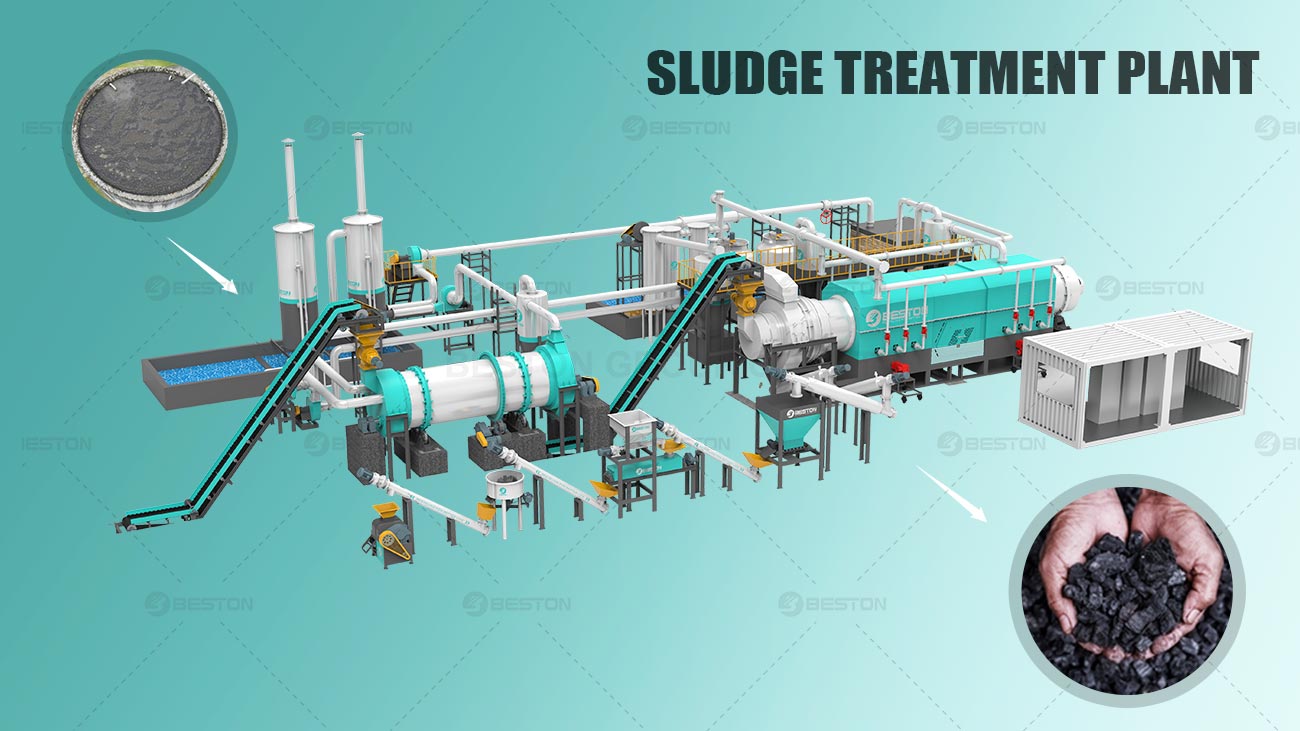Sewage sludge treatment plants are pivotal players in mitigating environmental impact. The integration of carbonization technology within these facilities marks a significant stride towards promoting eco-conscious practices and fostering green development.
The Role of Carbonization Technology
Sewage sludge, a byproduct of wastewater treatment processes, poses a considerable challenge in waste management due to its high moisture content and organic composition. Conventional disposal methods often entail landfilling or incineration, both of which come with inherent drawbacks such as environmental pollution and resource wastage.

The Process of Carbonization
Enter carbonization technology – a cutting-edge approach that transforms sewage sludge into valuable resources through controlled pyrolysis. This process involves subjecting the sludge to high temperatures in an oxygen-limited environment, resulting in the decomposition of organic matter into biochar, syngas, and bio-oil.
Environmental and Economic Benefits
By adopting carbonization technology, sewage sludge treatment plant revolutionize their operational paradigm. Instead of viewing sludge as mere waste, they harness its latent energy potential and convert it into renewable fuels and soil amendments. This not only mitigates the burden on landfills but also reduces reliance on fossil fuels, thus contributing to carbon emission reduction efforts.
Overcoming Challenges
The key to the efficacy of carbonization lies in its versatility and efficiency. Unlike traditional incineration methods that release harmful emissions into the atmosphere, carbonization operates in a closed-loop system, minimizing environmental footprint. Moreover, the produced biochar serves as a carbon sink, sequestering carbon dioxide and enhancing soil fertility when applied in agricultural practices.
Towards a Sustainable Future
The synergy between sewage sludge/wood/coconut shell/straw/rice hull carbonizer technology exemplifies a symbiotic relationship between environmental stewardship and industrial innovation. By diverting sludge from landfills and incinerators, these facilities mitigate methane emissions and alleviate pressure on finite resources. Furthermore, the derived biochar enriches soil health, promoting sustainable agriculture and biodiversity conservation.

Economic Implications and Opportunities
In addition to environmental benefits, the adoption of carbonization machine holds immense economic potential. Sewage sludge, once considered a liability, now becomes a valuable asset with multiple revenue streams. The biochar produced can be commercialized as a soil amendment, while syngas and bio-oil serve as renewable energy sources, tapping into lucrative markets for green fuels.
Addressing Obstacles
However, the widespread implementation of carbonization technology faces inherent challenges and logistical hurdles. From initial capital investment to operational scalability, sewage sludge treatment plants must navigate a complex landscape of regulatory compliance and technological feasibility. Nevertheless, with strategic partnerships and research-driven innovation, these obstacles can be surmounted, paving the way for a more sustainable future.
Conclusion: A Greener Tomorrow
In conclusion, the convergence of sewage sludge treatment plants and carbonization technology signifies a paradigm shift in waste management practices. By transforming sewage sludge into valuable resources, these facilities not only mitigate environmental impact but also foster economic growth and social well-being. As stewards of sustainability, it is imperative for stakeholders to embrace innovation and collaboration in shaping a greener, more resilient world. Explore deeper with Beston Group.